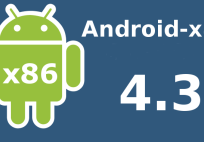Nvidia burst onto the mobile race with there chips a bit later and they played catch up to the rest, but they have catched up and are now pioneering to going forward. Nvidia with the new Tegra 3 quad-core processor is said to consume less power by a rough mark of 60%. As you will probably know the display is the main point of power consumption, Nvidia have seemingly chose to address this and bring us a solution to what we really want and that is longer battery life.
During the UBS Global Technology and Services Conference, NVIDIA CEO Jen-Hsun Huang detailed a new technology inside the Tegra 3 chip that will bring us exactly what we want and that is longer battery life.
The new technology known as DIDIM is apparently going to reduce the backlight power by 40&, this of course means longer battery life for us the users, which we desperately want.
Jen-Hsun Huang describes it below in detail.
âItâs the ability to per pixel, per frame, per scene to modulate the backlight so quickly that we over a long period of time, reduce the amount of backlight intensity and backlight energy by nearly half. We save as much power in the backlight without changing the visual fidelity at all to save, essentially, the entire power used by our chip.â?
If the Tegra 3 chip is in full active mode and running, it consumes between 1-2 watts, with a normal typical display it consumes between 3-6 watts. DIDIM technology should in theory bring us longer battery life and save us on consumption.
Nvidia are now fast becoming the forerunners in mobile processorâs now and itâs a welcome addition seeing them thinking of battery life in a mobile world and particularly with Android, now being dominated by the spec race war. DIDIM technology remains to be seen if it actually makes a positive difference, with the battery life and if the display is affected at all. Letâs hope the chip makers along with Nvidia take battery life into more consideration rather than trying to win the spec war with the biggest and fastest first.
Via: Nvidia








![[App] Lollipop Land; 5.0 easter egg released to play store as game](../../landofdroid.com/wp-content/uploads/2014/11/wpid-wp-1415372216626-resize-204-142.png)















